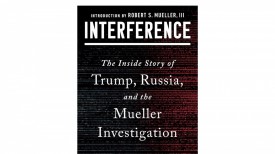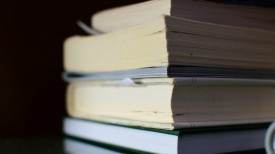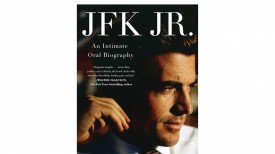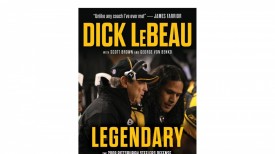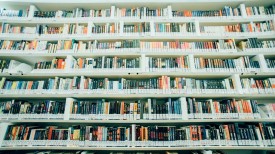'Cloud Atlas' Movie: Directors Tom Tykwer, Andy, and Lana Wachowski Reveal How They Made the 'Unfilmable' Film (Trailer)
"Cloud Atlas" doesn't open until Friday Oct. 26, but that hasn't stopped fans and critics from reveling in its triumphs or tearing it apart. The film, based on the novel of the same title by David Mitchell, already seems to be one of the most polarizing movies of 2012, much of which may be a result of the unique directing team behind it. Tom Tykwer ("Run Lola Run"), along with Lana and Andy Wachoski (The "Matrix" trilogy) directed the gargantuan film together.
Whatever your feelings on the directors' previous films, they've made some of the most iconic movies of the last 15 years. Their films are visceral cocktails of technology-pushing visual spectacle, heart pounding pacing and editing, and otherworldly, challenging narratives. You'd be hard pressed to find a more perfectly suited group of directors to adapt the labyrinthine tale of "Cloud Atlas" - a story long referred to by many as notoriously "unfilmable."
Based on the 2004 novel by British author David Mitchell, "Cloud Atlas" consists of six intertwined stories that take the audience from the remote South Pacific in the nineteenth century to a distant, post-apocalyptic future. Each tale is revealed to be a story that is read (or observed) by the main character in the next. Many of the leading actors in the film portray several different people in different eras, with different hair color, and sometimes appearing as a different race, and even gender. Got that straight?
Mitchell's "Cloud Atlas" won the British Book Awards Literary Fiction Award, the Richard & Judy Book of the Year award, and was short-listed for the 2004 Booker Prize, Nebula Award, and Arthur C. Clarke Award.
"Cloud Atlas" was made on a budget of more than $100 million, a portion of which was furnished by Warner Bros., but most of which was raised independently, which has led some to call it "the most expensive indie film of all time."
The movie stars Halle Berry, Tom Hanks, Susan Sarandon, Keith David, Jim Sturgess, Bae Doona, Ben Whishaw, Hugo Weaving, and Jim Broadbent, who each play upwards of 6 roles in the film each, in different time periods, genders, and even races.
Movie blog Slash Film recently caught up with Tykwer and the Wachowskis to discuss the process of turning Mitchell's complex novel into a fluid, digestible experience for any movie goer.
Interview via Slash Film:
Slash Film: The thing I wanted to talk about first is the editing. The movie quickly starts jumping from story to story; it moves so fast. I got such a rush watching it, because of that. Do you get that feeling in the editing room when you guys are sitting there with your editor and you're finally seeing all of these parts come together in the ways that you planned for so long? Do you get that rush that the audience would get?
Lana Wachowski: We got it first in the writing, and actually first in the creation of the structure where we started thinking that it could work. Just putting the cards suddenly next to each other and going "Wouldn't that be an amazing cut?!?!" I mean there were cuts that we had from the very beginning when we first sat down and made all of the cards and put them next to each other. Then there was a process of excitement when we started designing the film and thinking about it. He came in with this idea of this beautiful dissolve from Frobisher to Sixsmith reading the letters and those sorts of transitions and cuts and connections happened in the planning of it and then the third form of pleasure... and this is great, because when David Mitchell saw the movie, he was like "You take something that is a ubiquitous element of structure like a sentence," an edit is like a sentence and he said "You turn it into this secret pleasure, that is like a gift and if you think about each one and you see them all it's like you're constantly getting these presences through the whole movie that's just in the nature of the juxtaposition and the connection."
SF: Absolutely. That's exactly how I felt about it.
Tom Tykwer: If you're talking about the editing, it's also you have to point out that Alex [Berner], who did it, did an enormous job. It was enormous. He had to collect material from two main units shooting, constantly burying him with material every day, like tons of hours and he kept up with it. We were in it in this particular way, but having someone who always knew while we were actually discussing it in the editing room and thinking about ideas who always was on top of it. "Oh, I know where that is" and picking the pieces together from this huge tree of material and always knowing where to root it. It was a real luck. It was a real true find that we got him in this space.
It was like the three became the four of us, which is like what the whole process was. Even with the DPs or the production designers, it was always like "Can you join our circle of creative love and share in the joy of sharing?" He was amazing. I mean always consider the amount of stuff that had to work on his mind and three minds separately were coming at him with "I have this idea. Let's try this..." and then we could always take a break, at least a thinking break, but he was all constantly thrown at with ideas.
SF: So [Tom is] shooting half the movie and [Andy and Lana] are shooting the other half of the movie, what were some of the things you had to keep in mind to keep it cohesive? Did you want them to live separately, as they are separate genres, or were there certain principles you had to keep in mind as you were filming to make sure it all gelled?
Andy Wachowski: We were in constant communication. We had prepped the movie and we had planned the movie together and we knew where we were making specific transitions from story to story, but, you know, we were there with our Skype pads doing camera moves and always reviewing each other's dailies and saying "That's a good idea, I'm going to use that for this."
Tykwer: For us, it was really important to... Filmmaking in the entirety of its process... We'd been working four years constantly on this. I mean we started reading the novel six years ago and we starting writing the script basically four years ago, which means this is the period of time we spent with this. Of this, it's a bit more than three and a half months of filming, which is comparatively very little.
Of course the way we work, because we are very much prep driven directors, we like a lot of prep, we enjoy very much the designing part of it, we love getting all of these people involved that bring in their ideas. We cast the movie close together with Laura Kennedy and really met every actor, the three of us. It was always this situation where there's this one guy and three directors. Every situation was like that. Every rehearsal was done like that. Then you go and you feel like the shooting, even though of course there's still stuff that you can make decisions on with each other, the shooting mostly belongs to the actors. I mean the most important element that then happens is what they come up with and what they discover throughout the filming process itself and so we feel like because we had done our homework, which we felt we did, it was really a great ground for them to then step on and fill it with their life and their particularness. And then you go, and even though we didn't always see each other every day, but sometimes we were on the same stages next door to each other, that of course was very nice, the most beautiful days. If we had been able to maybe afford it, we would have ended up having shot everything with the three of us, but it was technically and economically... It would have been insane and would have expanded the shooting period to a hundred and twenty-five days, on which you wouldn't have gotten all of these big name actors for the little money they got.
© 2023 Books & Review All rights reserved.
Popular Now
1
Books to Read After 'Fourth Wing': Top Picks for Fantasy and Romantasy Fans

2
‘The Secret Public’ by Jon Savage Book Review: An Insightful Look Into the LGBTQ Influence

3
Stephanie Regalado's 'If They Only Knew' Column Is Now A Book, Unleashing 60 Anonymous True Stories to Empower Women

4
'No Wire Hangers' Scene That Almost Did Not Happen: New Book Reveals Faye Dunaway's Struggles

5
Rare First Edition of Aphra Behn's Novel 'Oroonoko' Discovered in Kent: A Historic Literary Find

Latest Stories
Book Reviews
‘The Secret Public’ by Jon Savage Book Review: An Insightful Look Into the LGBTQ Influence

Book News
Stephanie Regalado's 'If They Only Knew' Column Is Now A Book, Unleashing 60 Anonymous True Stories to Empower Women

Book News
'No Wire Hangers' Scene That Almost Did Not Happen: New Book Reveals Faye Dunaway's Struggles

Book Reviews
‘The Perfect Couple’ by Elin Hilderbrand Book Review: A Captivating Summer Mystery

Book News
New Book ‘The Franchise’ Reveals Penguins President Kyle Dubas’ ‘Biggest Mistake’ as Maple Leafs GM

